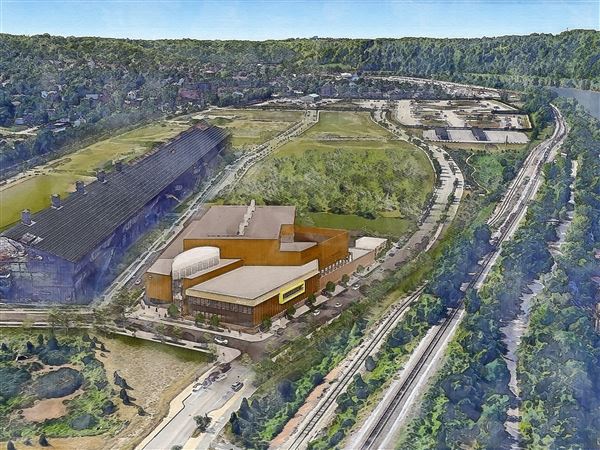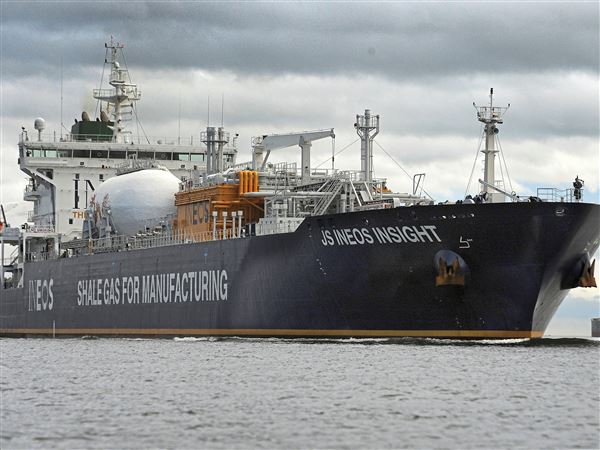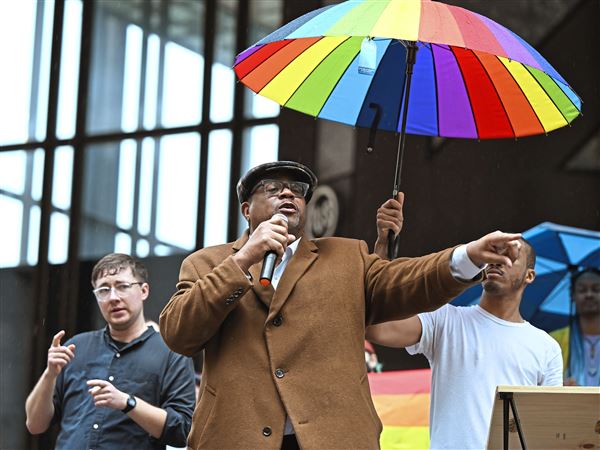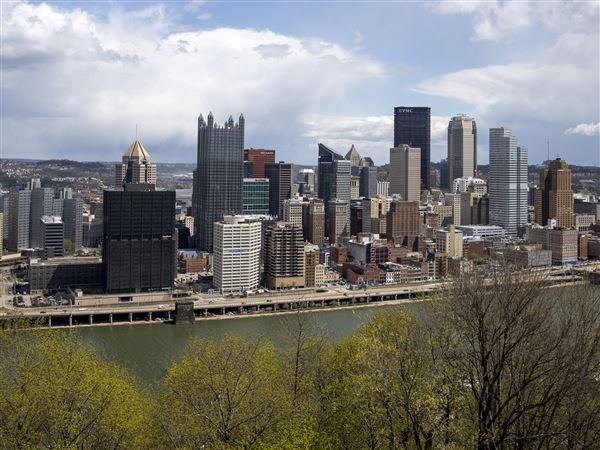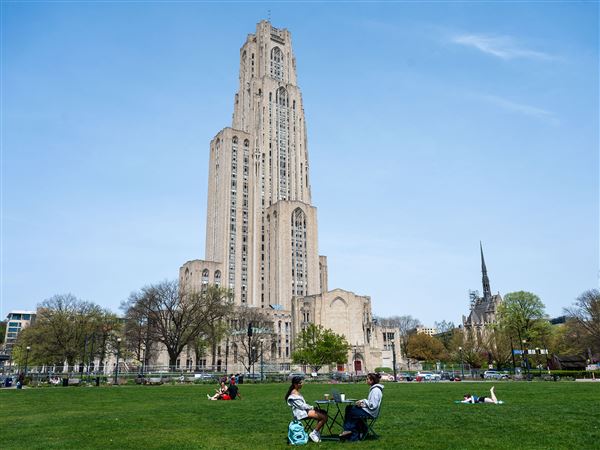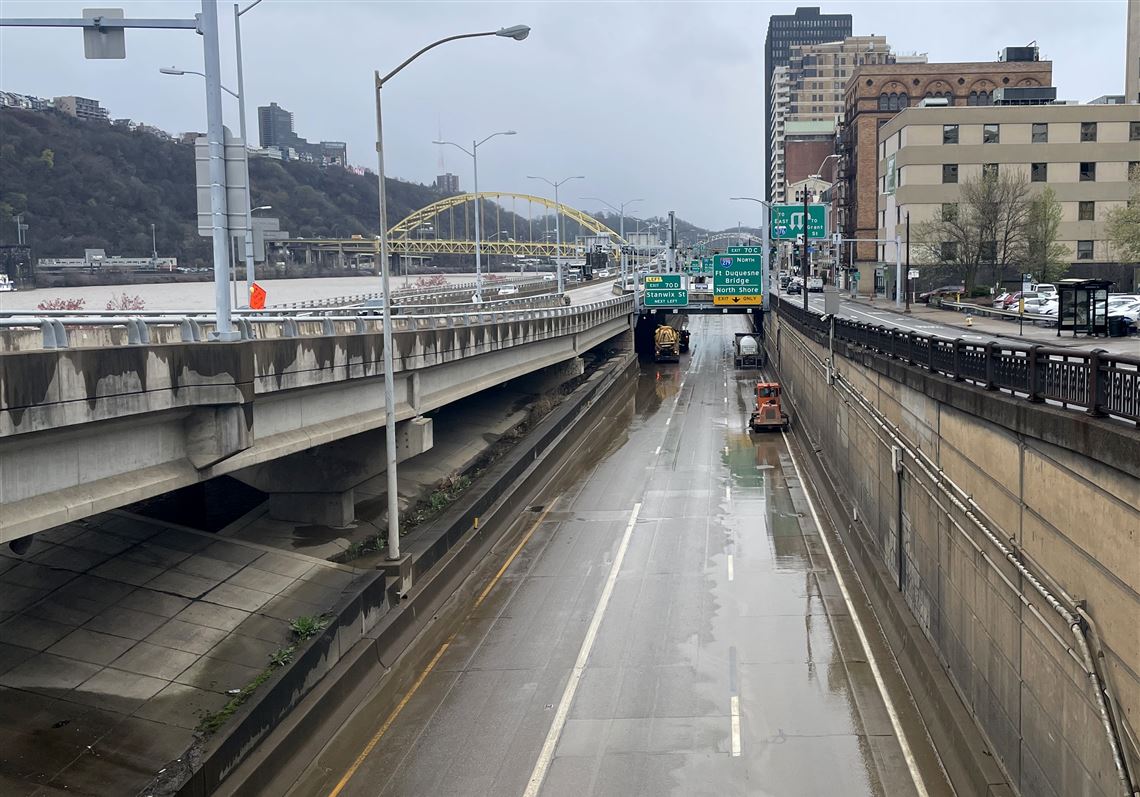In the 1950s, the City of Pittsburgh asked the Pennsylvania Department of Transportation to install the westbound lanes that connect the Parkway East to the Fort Pitt Bridge in what the Post-Gazette once called “the low, narrow area below Fort Pitt Boulevard.”
This created the notorious section of the I-376 known as “the bathtub.” During high water on the Monongahela River, flooding causes massive delays and headaches. Over the years, several motorists have needed to be rescued, despite the walls being raised six feet in 1985.
In mid-April, the U.S. Transportation Department announced it would send an additional $6.7 million in funds to raise the floodwalls again. This is in addition to a $142.3 million appropriation, announced in January, for improvements to several Pittsburgh roadways, the bathtub included. The new funds are meant to ensure no shortfalls in bathtub-related construction.
Besides the inconvenience and potential danger, it’s expensive and time-consuming for PennDOT to clean out the low-lying highway after a flood event. After river waters reach 25 feet, the approximately 2500-foot section fills with excess water and can take about 12 hours to be pumped clean of all the debris, costing hundreds of thousands of dollars every time.
It’s not just a matter of raising the wall. PennDOT spokesman Steve Cowan said in 2018 that “improvements to I-376 in the bathtub area would be challenging,” as there are “issues of vertical clearances and consequences to other roadways in the area, in addition to fiscal limitations, [which] deter the department from making significant upgrades that would prevent flooding.”
The newly announced funds should resolve the fiscal limitations, and better allow PennDOT to raise the floodwall while also considering new approaches like managing soil and groundwater. One new addition the project will definitely include: gates to prevent motorists from entering the area when it’s dangerous. Which hopefully won’t be as often.
The bathtub has flooded almost 20 times since the 1985 improvements, with 20% of those incidents occurring in the last six years — a harbinger of more to come as extreme weather events increase along with temperatures. Pittsburgh needs to prepare for an increasingly unpredictable future, and these funds can help get a much-needed project moving forward.
The project remains in the engineering phase, but will hopefully be in construction by late 2026, according to Mr. Cowan.
Senators Bob Casey and John Fetterman, as well as Representatives Chris Deluzio and Summer Lee, announced the funding, with Ms. Lee calling it “a game-changer.”
It’s exactly the kind of project enhanced federal infrastructure funding was meant to facilitate: long-deferred and essential to regional climate resiliency. But even if the Parkway is dry for the next thousand years, Pittsburghers will still call it “the bathtub.”
First Published: May 4, 2024, 9:30 a.m.
